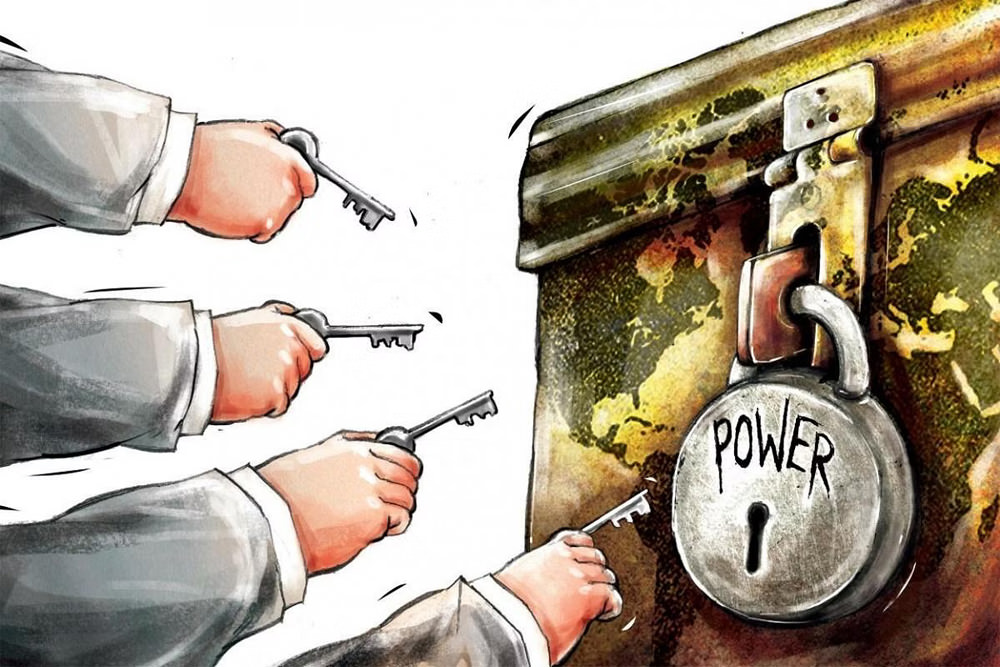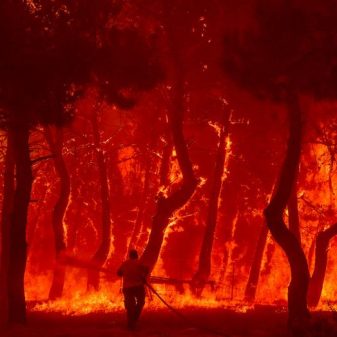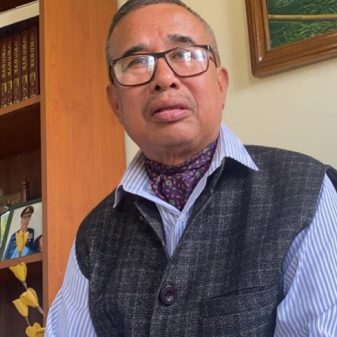
Lt Gen Syed Ata Hasnain (Retd)
The international community should remain concerned about the Sino-Indian border and the unjustified threats that China perceives from India’s rising international status
Lots of people today talk and discuss the new world order. It is a subject on which there is little clarity as today’s order is in disarray and what is emerging is steeped in uncertainty. For any discussion we must have a basic definition to go by because the term ‘world order’ is itself contentious. One simple definition in the Oxford Languages Dictionary explains world order as “a system controlling events in the world, especially a set of arrangements established internationally for preserving global political stability”. What it fails to say is that the system is formalised to a very low degree, remains more often in freewheeling mode and is ever dynamic.
Nothing exemplifies that better than the dynamic world order which emerged after the Cold War. There are numerous domains which contribute to the making of the informal world order; these many times contribute to the hierarchical order among nations and include economics, energy, technology, health and pharma, education, and research and development.
However, the most contentious of contributing factors is the spectre of ongoing international conflicts at any time. Conflict dynamics have the most severe impact on the world order, which in turn affect all
protocols for peace and cooperation. It leads to a breakdown of the geopolitical order as evident in some of the sessions of the G20 deliberations.
Where does this explanation place us today in terms of the search for a stable world order? Covid-19 had a war effect on national economies. But more dangerous than that are currently a number of international conflict zones, some active and some potentially active. It is the outcome or the status of these at any time that will decide intervals of peace and stability. There is also the threat of a potential return of global terror which goes beyond boundaries. All this needs analysis.
Currently, four main international conflict zones exist, although sub-conflicts also abound. These are East Europe (Ukraine-Russia), Middle East (Iran-Saudi Arabia, Israel-Palestine), South Asia (India-Pak and Sino-Indian) and the Indo Pacific (US-China). These are all interconnected, and big powers can ignore the dynamics of any only at their peril. While the Middle East conflicts are the longest lasting and their potential to influence the order is also based on the threat to resources and international sea lanes, in the last one year, the comparative degree of significance among conflicts lies in East Europe. The Ukraine war has complicated things, resulting in a new Cold War between the US-led West and Russia. It was anticipated that such a situation would emerge between the US and China at a later stage, with Russia a comparatively muted spectator. The East European conflict has altered things.
The signs were ominous since 2014 when Russia invaded Crimea and commenced its hybrid war in the Donbas region in Ukraine. The US then was too involved with Afghanistan, and the ISIS (Daesh) phenomenon was at its peak in the Middle East, demanding the attention of big powers. Gross miscalculations by the West led to it losing the advantage it gained by withdrawing from Afghanistan. The long-standing strategy of containing Russia after the end of the Cold War (1989) was taken to
the extreme, which not only dented Russian pride but became an existential threat to it. This conflict now exists as a virtually interminable one. A ceasefire without any territorial effect will be inconsequential but it will remain dynamic in intensity.
For the US and its unipolar strategic approach, the next focus after Afghanistan and the Middle East was to be on the Indo Pacific. That focus has had to shift, which itself alters the dynamics of the informal order. The shift has afforded space to China to make inroads into regions of intense US interest.
It’s the Middle East where China has been attempting its foray and has finally made a dent with the brokering of the Iran-Saudi deal. It’s more for its own energy interests. Yet, it achieves a double by drawing US concern, which sees its Abraham Accords and the Israel-Saudi partnership under threat with a possible resurgence of the Palestinian-Israel conflict. The complexities here are beyond the binaries of US-China competition.
There is the South Asian conflict zone to contend with. While the India-Pakistan conflict brings the spectre of nuclear threats to the fore, the region is quiet and less afflicted by a direct conflict between the two. The potential, however, remains high and is directly connected to the status of sponsored proxy hybrid war, with terrorism as the prime component. The region has a huge potential for spawning another global terrorist campaign, with the core centre yet lying in Afghanistan’s spaces under occupation by various terror organisations. Pakistan’s unstable status involves almost all parameters—financial, governance deficit, social deficiencies, political instability and military predominance. It is a tailor-made formula for the triggering of the next cycle of global terror. Yet, the area is devoid of international attention.
The international community is and should remain concerned about the Sino-Indian border and the unjustified threats that China perceives from India’s rising international status. It is at the LAC that China wishes to keep India pegged, hoping that this will prevent it from any surging ambition to be an essential member of the US strategic groupings. Through this, it also hopes to neutralise India being a maritime threat in the Indian Ocean where it has an obvious advantage.
The Ukraine conflict, the dynamics of the Indo-Pacific region, the Sino-Indian standoff in the high Himalayas, and to an extent even the sub-conventional threats from South Asia—all confer India with
the status of a virtual swing power. Its support is required by the powers in Ukraine. In the Indo-Pacific, China wants it subdued by pressure of potential conflict in the Himalayas. The US wants it as a strategic partner both to handle the region west of the Straits of Malacca and in the outreach to Southeast and East Asia to deny Chinese influence.
All the above brings to the international strategic environment a status of intense complexity. There appears little possibility of any of these situations diluting or resolving. The US withdrawal from Afghanistan exemplifies how in the end of a conflict lies potential for another, somewhere else and with even greater intensity. It’s only when nations lower their ambitions and create more mutual trust that a durable world order can emerge. That could be considerable utopian thought.
(The writer is a Former Commander, Srinagar-based 15 Corps. Now Chancellor, Central University)
(Courtesy: The New Indian Express)





